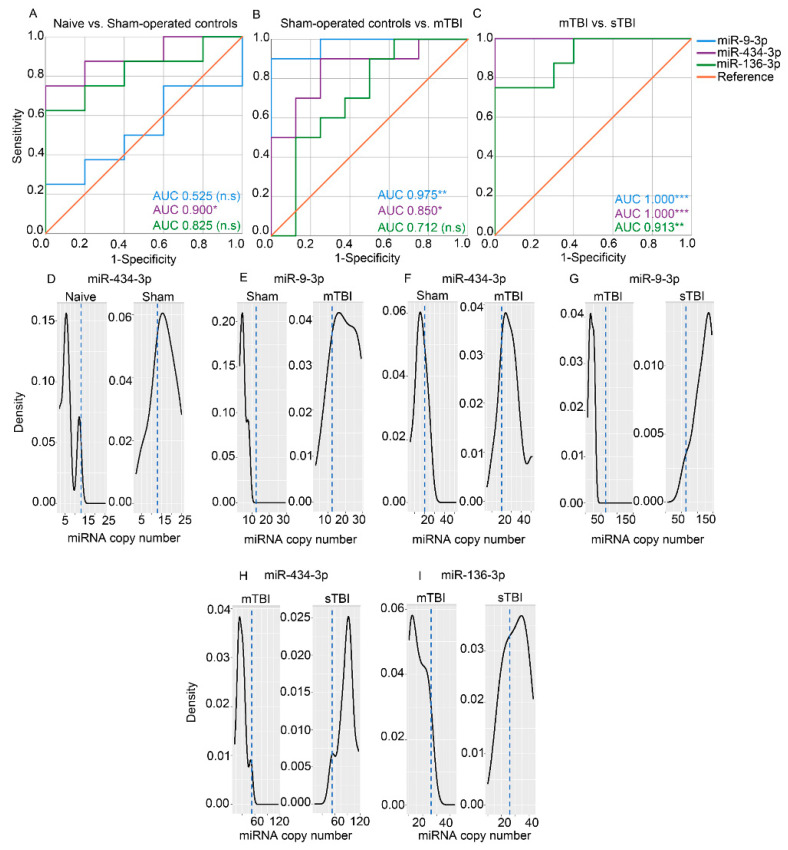Figure 7.
Receiver Operating Characteristic (ROC) and cut-off analysis indicated that plasma miRNAs separated the sham-operated controls from naïve rats (craniectomy effect), mTBI rats from sham-operated controls (TBI effect), and sTBI rats from mTBI rats (TBI severity effect). (A,D) Plasma miR-434-3p levels separated the sham-operated controls from the naïve rats with 75% sensitivity and 100% specificity (cut-off 13 copies, AUC 0.900, p < 0.05), whereas plasma miR-9a-3p and miR-136-3p did not separate the groups. (B,E,F) Plasma miR-9a-3p levels separated the mTBI group from the sham-operated controls with 90% sensitivity and 100% specificity (cut-off 12 copies, AUC 0.975, p < 0.01) and miR-434-3p levels with 90% sensitivity and 75% specificity (cut-off 20 copies, AUC 0.850, p < 0.05). miR-136-3p levels were similar between the two groups. (C,G–I) Plasma miR-9a-3p levels separated the sTBI group from the mTBI group with 100% sensitivity and 100% specificity (cut-off 64 copies, AUC 1.000, p < 0.001), miR-434-3p with 100% sensitivity and 100% specificity (cut-off 53 copies, AUC 1.000, p < 0.001) and miR-136-3p 75% sensitivity and 100% specificity (cut-off 26 copies, AUC 0.913, p < 0.05). Abbreviations: AUC, area under the curve; miRNA, microRNA; mTBI, mild traumatic brain injury; n.s, not significant; sham, sham-operated experimental controls; sTBI, severe traumatic brain injury. Statistical significances: * p < 0.05, ** p < 0.01, *** p < 0.001 (Mann-Whitney U test).

